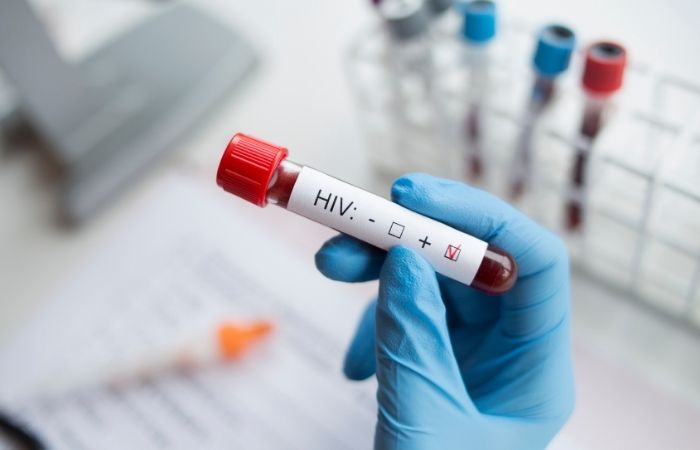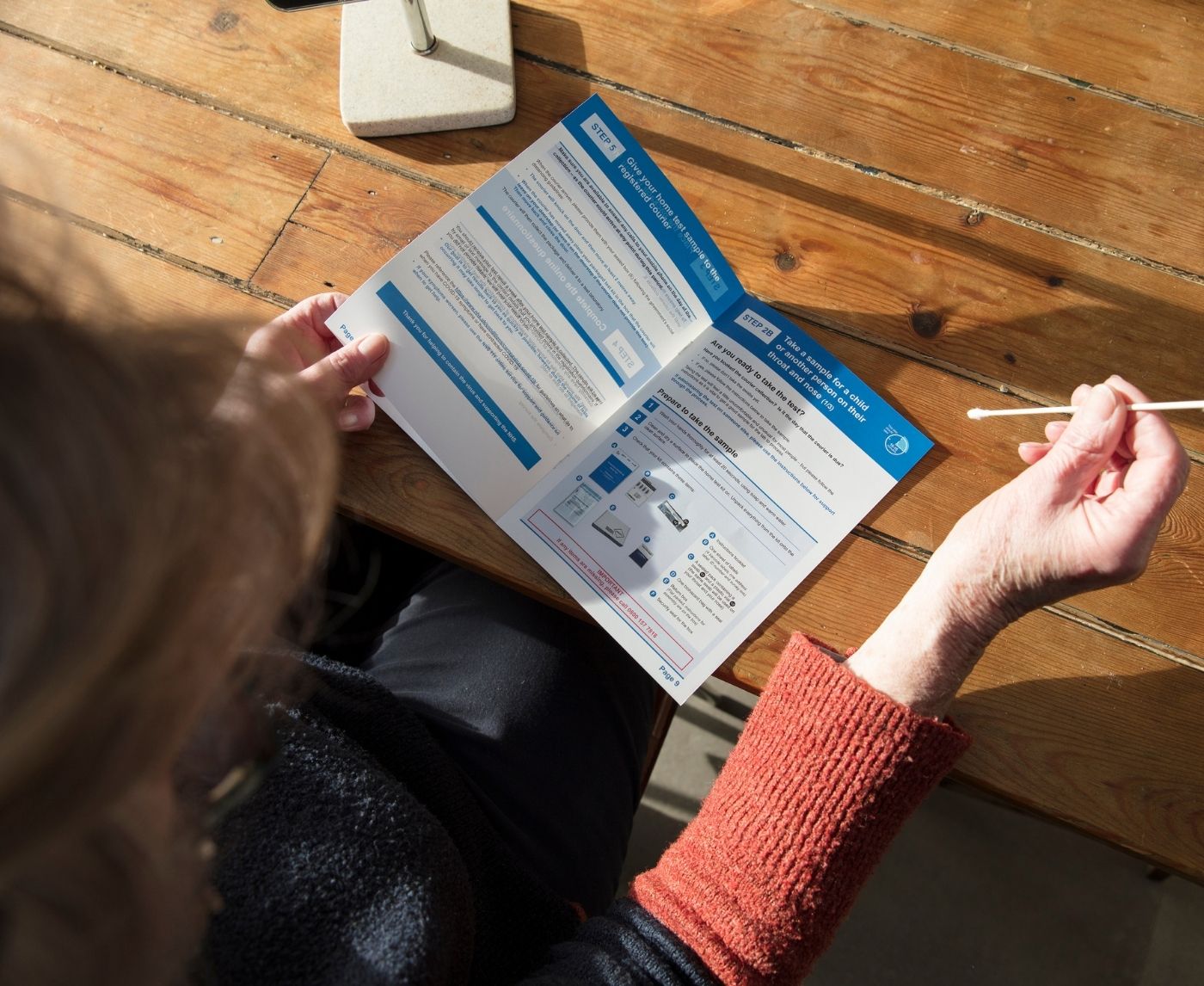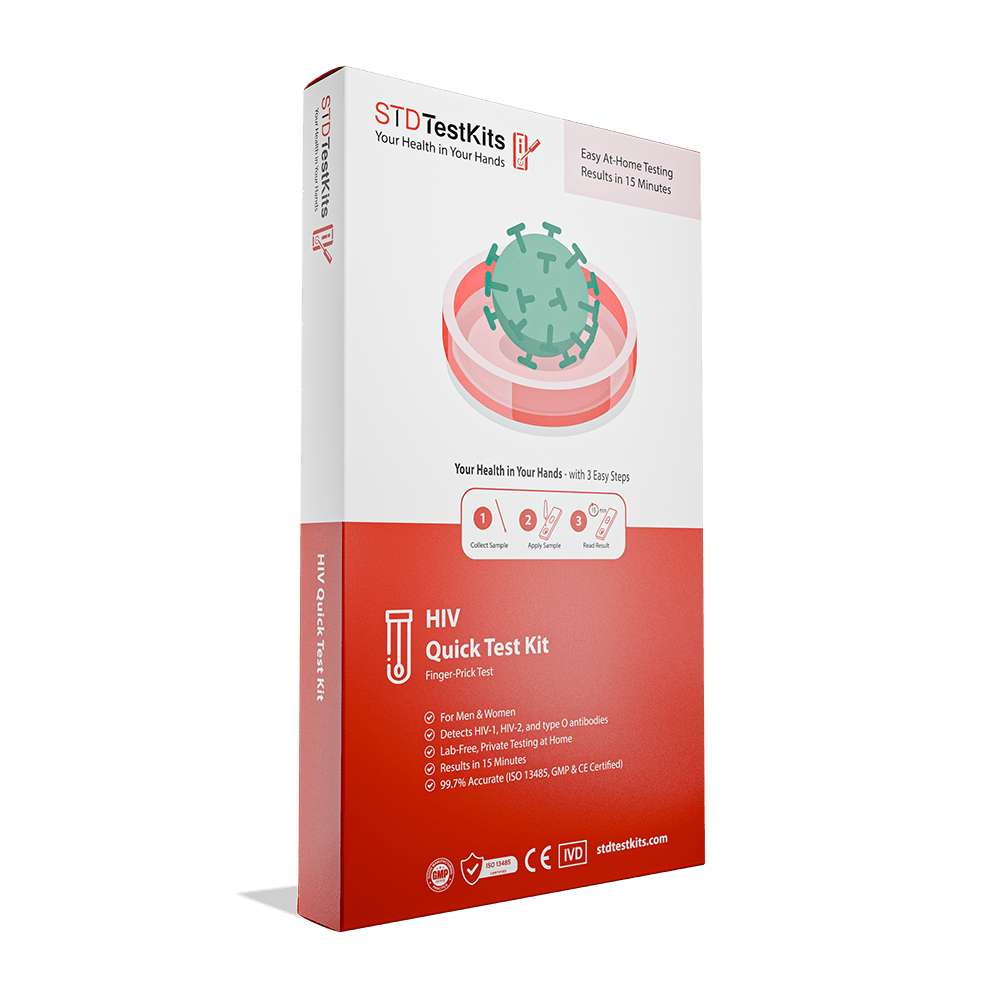HIV Test Too Early? Here’s When to Test for Accurate Results
Quick Answer: KwaZulu-Natal’s reported HIV progress shows strong testing and treatment outcomes, but gaps remain in treatment and suppression. At-home HIV testing is still vital, especially for people avoiding clinics or unsure of recent exposure. Early self-testing supports the diagnosis arm of the 95-95-95 goals and empowers users to take action sooner.
Who This Guide Is For (And Why It Matters)
If you’ve ever hesitated to get tested because you’re scared of the result, ashamed of the situation, or simply don’t have time to wait at a clinic, this guide is for you. It’s for people in new relationships, folks who had a condom break, men and women who feel a little off but don’t know if it’s just stress or something more. It’s for those in rural towns with no testing centers nearby and for those who simply want privacy without the judgment.
The progress in KwaZulu-Natal reminds us of something crucial: testing saves lives. But testing doesn’t just happen in clinics. It happens in bathrooms, bedrooms, and quiet moments of courage. We’ll walk you through what HIV self-testing looks like, how accurate it is, when to do it, and what comes next, whether your result is positive, negative, or unclear.
What Actually Counts as an HIV Test?
Not all HIV tests are created equal, but they all share one goal: detecting the virus or the body’s response to it. The most common types include the rapid fingerstick test (used in many home kits), fourth-generation lab tests that detect both antigens and antibodies, and the more sensitive PCR (NAAT) tests used for early detection and confirmation.
At-home tests typically use a finger-prick blood sample or oral fluid. Most detect antibodies, meaning they’re best used after the body has had time to react to infection (usually two to eight weeks post-exposure). These kits are designed for privacy, ease, and speed, with results often available in under 20 minutes. According to the CDC, self-tests can be accurate if used correctly and at the right time.
For those looking to skip the awkward clinic wait, STD Rapid Test Kits offers several discreet options for HIV home testing. You can order a trusted HIV test kit here and take control of your health in private, on your terms.

People are also reading: When an “Ingrown Hair” Is Actually an STD
Understanding the HIV Window Period
The “window period” is the time between when a person is exposed to HIV and when a test can reliably detect the infection. It’s not the same as when symptoms might show up (if they show up at all). Knowing this timing is critical, test too soon, and you might get a false negative even if you’re infected.
Figure 1. HIV test types and detection windows. Timing matters, testing too early can miss infection even if symptoms are present. Wait the correct number of days based on the type of test you’re using.
Rapid Test vs Lab Test: Which One Should You Choose?
Imagine this: it’s midnight, and you’re lying awake, stomach churning. You had a hookup two weeks ago. No condom. No follow-up. The idea of walking into a clinic feels unbearable, but waiting is worse. That’s where at-home tests come in. They offer a kind of quiet power: answers without exposure, control without delay.
But let’s break down the real differences. At-home rapid tests give results in minutes and protect your privacy. Lab tests, whether mail-in or at a clinic, are often more sensitive and can detect infection earlier. If you're still within the HIV window period, a lab test may be more reliable. If it's been more than 12 weeks, most at-home antibody tests are accurate enough to provide peace of mind.
Figure 2. Comparing HIV test options. Choose based on timing, privacy needs, and emotional readiness.
When to Test After Possible HIV Exposure
If you had a risky encounter, whether unprotected sex, needle sharing, or exposure to someone whose status is unknown, you don’t need to panic, but you do need a plan. Testing too early can lead to false negatives. Testing too late delays care. Here’s how to think about it.
In the first week post-exposure, there’s very little any test can detect. This is the time to monitor, but not rely on results. Between 2–4 weeks, a PCR test might detect the virus itself. Between 3–6 weeks, a fourth-gen antigen/antibody test becomes more reliable. After 12 weeks, even at-home antibody tests reach peak accuracy.
Here’s a scene that plays out more often than you’d think: someone tests negative at week two, breathes a sigh of relief, then gets symptoms at week six, and finally tests positive. Retesting saved their life. Don’t treat a single negative as the end of the story. Time your testing wisely.
If you’re unsure when you were exposed, or if the encounter was ongoing (e.g., a new partner you’re still seeing), opt for an initial test now and a follow-up in a few weeks. If you're ready to act, this HIV Rapid Screen Test offers a discreet, accurate option from the privacy of your home.
Do I Need to Retest? Here’s How You Know
Let’s say you tested negative on day 10 after a high-risk event. Should you retest? Yes. Especially if you used an antibody-only test, which may not detect infection that early. Most guidelines suggest retesting at the 12-week mark for confirmation. But depending on your symptoms, exposure type, and emotional comfort, retesting sooner with a more sensitive method (like PCR) may also help.
Now imagine this: you took a rapid test and the result window showed one faint line, you’re not even sure what that means. Or you dropped the cassette during the test. Or your hands were shaking so badly you aren’t confident the sample was collected right. These are all reasons to retest.
On the flip side, if you tested positive, you’ll still need a follow-up lab confirmation. And then, ideally, follow the same path as the thousands in KZN who are now on treatment, and undetectable.
Bottom line: retesting is not a failure. It’s clarity. Return to STD Rapid Test Kits to view discreet follow-up options or consider a multi-test panel if multiple exposures occurred.
Your Privacy, Your Power: How At-Home HIV Testing Protects You
One of the biggest barriers to HIV testing isn’t fear of the virus, it’s fear of being seen. Of someone spotting you at the clinic. Of judgmental looks from staff. Of having to explain something you’re not ready to say out loud. This is especially true for LGBTQ+ folks, sex workers, people in tight-knit communities, and anyone living with internalized stigma.
That’s why at-home testing changes the game. Your results are yours, no waiting rooms, no awkward questions, no paper trails. Packages from STD Rapid Test Kits arrive in plain packaging. Results are visible only to you. And because most kits are single-use with clear instructions, you’re not stuck wondering if you did it right. Privacy isn't just a preference. It’s a form of safety.
What If the Test Is Positive?
Let’s pause here. You took the test. You saw the line. It’s positive. That single moment can feel like the floor disappears under you. But here’s the truth: a positive HIV result is not the end. It’s the beginning of treatment, protection, and reclaiming your power.
Start by breathing. Then confirm your result with a lab-based test, either through a clinic or a mail-in option. From there, connect with a provider to discuss treatment. Antiretroviral therapy (ART) today is highly effective. Many people become undetectable within months, meaning the virus is so suppressed it can’t be transmitted to others (CDC: Undetectable = Untransmittable).
Here’s what one fictionalized composite patient described: “I thought testing positive meant I’d die young. Instead, it meant I got on meds early. I haven’t missed a day in two years. My partner tested negative and we’re planning to have a kid, safely.”
Being positive doesn’t mean being powerless. Knowing your status is the first act of self-care, and the first step in protecting everyone you love.

People are aslo reading: Syphilis Exposure Timeline: What Happens in the First 30 Days
Case Snapshot: “I Took the Test in My Car, And I’m So Glad I Did”
Anele, 29, had been avoiding the clinic for months. Her last partner refused to get tested, and she’d felt tired and run-down for weeks. After reading about KZN’s rising testing rates, something clicked. She ordered a rapid test kit online, waited for her lunch break, and took the test in her car with the AC running. It came back negative, but the experience changed everything.
“Just doing it made me feel in control again. I didn’t have to justify myself to anyone. And now, I test every six months, it’s part of my routine, like brushing my teeth.”
Anele’s story reflects what the KZN progress report shows on a macro level: when people test early and often, treatment works, fear drops, and lives are saved.
When Silence Is a Symptom Too
Here’s something most people don’t realize: HIV can live in your body for months, or even years, without making a sound. No fever. No rash. No “you’ll know if you have it” moment. This quiet phase is where the virus does some of its most dangerous work, quietly weakening the immune system while everything on the outside feels normal.
We’ve heard stories like this again and again: someone donates blood and finds out. Someone gets pregnant and tests positive during routine screening. Someone gets flu symptoms but shrugs it off. Silence isn’t safety. It’s why testing matters even when you feel fine, especially if you’ve had unprotected sex, multiple partners, or any exposure you’re unsure about.
One user told us, “I had zero symptoms, literally nothing. I only tested because my partner was scared. Turns out, I’d been positive for over a year.” They’re now on treatment, undetectable, and thriving. But they almost didn’t test at all. Don’t wait for your body to “tell you something’s wrong.” Sometimes, the only clue is inside a test result.
Why the 95-95-95 Numbers Aren’t the Whole Story
Let’s talk about the big numbers from the KZN report. Three districts have reached or exceeded the first “95” target: diagnosing 95% of all people living with HIV. That’s incredible. But zoom in and you’ll see the other two targets, linking 95% to treatment, and ensuring 95% of those achieve viral suppression, still trail behind. Why?
Because diagnosis is just the beginning. Getting tested is the doorway, not the destination. Some people test positive and vanish from the system, too scared, too shamed, too unsupported. Others start treatment but can’t afford to stay on it, or face stigma that pushes them into silence.
This is where at-home testing plays a role. When someone can test without fear, when no one’s watching or judging, they’re more likely to start the process. More likely to retest. More likely to seek treatment. This is especially true for marginalized groups: queer youth, people who use drugs, sex workers, rural communities. The road to “95” starts in bedrooms and bathrooms, not just clinics.
So yes, KZN’s progress is huge. It’s proof that public health investment works. But it’s also a reminder that progress lives in individuals, not just percentages. Your test still matters. Your decision to check, confirm, or retest, even if you think “it’s probably nothing”, is part of the story.
FAQs
1. Can I really trust an HIV test I take at home?
Yep, as long as you follow the instructions and wait until the window period has passed. Think of it like baking: if you pull the cake out too early, it might look fine, but the inside could still be raw. Most rapid tests are over 90% accurate after 12 weeks from exposure. If it’s been less time, test again later, or try a lab test for extra peace of mind.
2. How soon after sex can HIV show up on a test?
The earliest signs show up on high-sensitivity lab tests (like PCR) around 10 days post-exposure. But if you’re using a typical at-home rapid test, you’ll want to wait 3 to 12 weeks. Anything earlier, and the virus may still be flying under the radar.
3. I saw a faint line, am I positive?
If the test has two lines, even if one is barely there, treat it as positive. Don’t wait and wonder. It doesn’t mean you’re definitely infected, but it does mean it’s time to confirm with a lab test. One user told us they saw a “ghost line,” thought it was a fluke, waited a month, and then tested positive. Trust your gut and double-check with a provider.
4. What if I’m scared to see the result?
You’re not alone. So many people freeze right before flipping that cassette over. Try this: have a support person on standby via text, take some deep breaths, and remind yourself, knowing is power. No matter what it says, there’s a path forward. And if it helps, take the test somewhere you feel grounded: your bed, your car, a favorite chair. This moment is yours.
5. Do I have to tell my partner if I test positive?
Legally, that depends where you live. But ethically, and for their health, yes. And there are ways to do it that protect both of you. Some clinics offer anonymous partner notification. Or you can use online tools. You don’t have to do it alone, and you don’t have to say everything all at once.
6. If I test negative, I’m in the clear, right?
Not always. A negative result means either you’re truly negative, or it’s just too early to tell. If you tested within a few days of exposure, don’t hang your hat on that result, wait a few weeks and test again. One test is information. Two tests are confirmation.
7. Can HIV go away on its own?
No, it doesn’t work like that. But here’s the good news: with treatment, HIV can become undetectable. That means the virus is still there, but so suppressed it can’t be transmitted. Undetectable = Untransmittable (U=U). It’s not a cure, but it’s the next best thing.
8. What if I’ve had multiple partners, should I test more often?
100%. If you’re sexually active with more than one partner, or with partners whose status you don’t know, regular testing is one of the best things you can do. Every 3 to 6 months is a solid rhythm. It’s like a sexual wellness oil change. Stay tuned up, stay empowered.
9. Is oral sex risky for HIV?
Lower risk than vaginal or anal, but not zero. Especially if there are cuts, sores, or bleeding gums involved. Saliva has enzymes that can help fight HIV, but they don't always work. You might still want to get tested if you only do oral sex, especially if you do it with new or multiple partners.
10. Where can I get a reliable at-home test without anyone knowing?
Right here: our HIV test kit ships in plain packaging and doesn’t leave your name in bold letters anywhere. No awkward pharmacy counter, no “Hey, what’s that box?” Just you, a test, and the answers you deserve.
You Deserve Answers, Not Assumptions
KwaZulu-Natal’s progress toward the 95-95-95 goals is a sign that when testing is accessible and judgment-free, people show up. At-home HIV testing is part of that progress. It brings the clinic to you, no shame, no delays, just clarity.
If you're still wondering whether to test, that’s your sign. This rapid HIV test is discreet, fast, and designed to meet you where you are, literally and emotionally.
How We Sourced This Article: We combined current guidance from leading medical organizations with peer-reviewed research and lived-experience reporting to make this guide practical, compassionate, and accurate.
Sources
1. Significant Progress in HIV Treatment Outcomes Reported by KZN Health Department
4. Getting Tested for HIV | CDC
5. WHO updates HIV testing guidance: more self‑testing, integration and prevention support
6. Consolidated guidelines on differentiated HIV testing services | WHO
7. HIV Testing Overview | HIV.gov
8. Information regarding the OraQuick In‑Home HIV Test | FDA
9. A short technical update on self‑testing for HIV | UNAIDS
10. HIV Self‑Testing and PrEP: Opportunities for scale‑up | PrEPWatch
About the Author
Dr. F. David, MD is a board-certified infectious disease specialist focused on STI prevention, diagnosis, and treatment. He blends clinical precision with a no-nonsense, sex-positive approach and is committed to expanding access for readers in both urban and off-grid settings.
Reviewed by: K. Mthethwa, MPH | Last medically reviewed: November 2025
This article is for informational purposes and does not replace medical advice.







